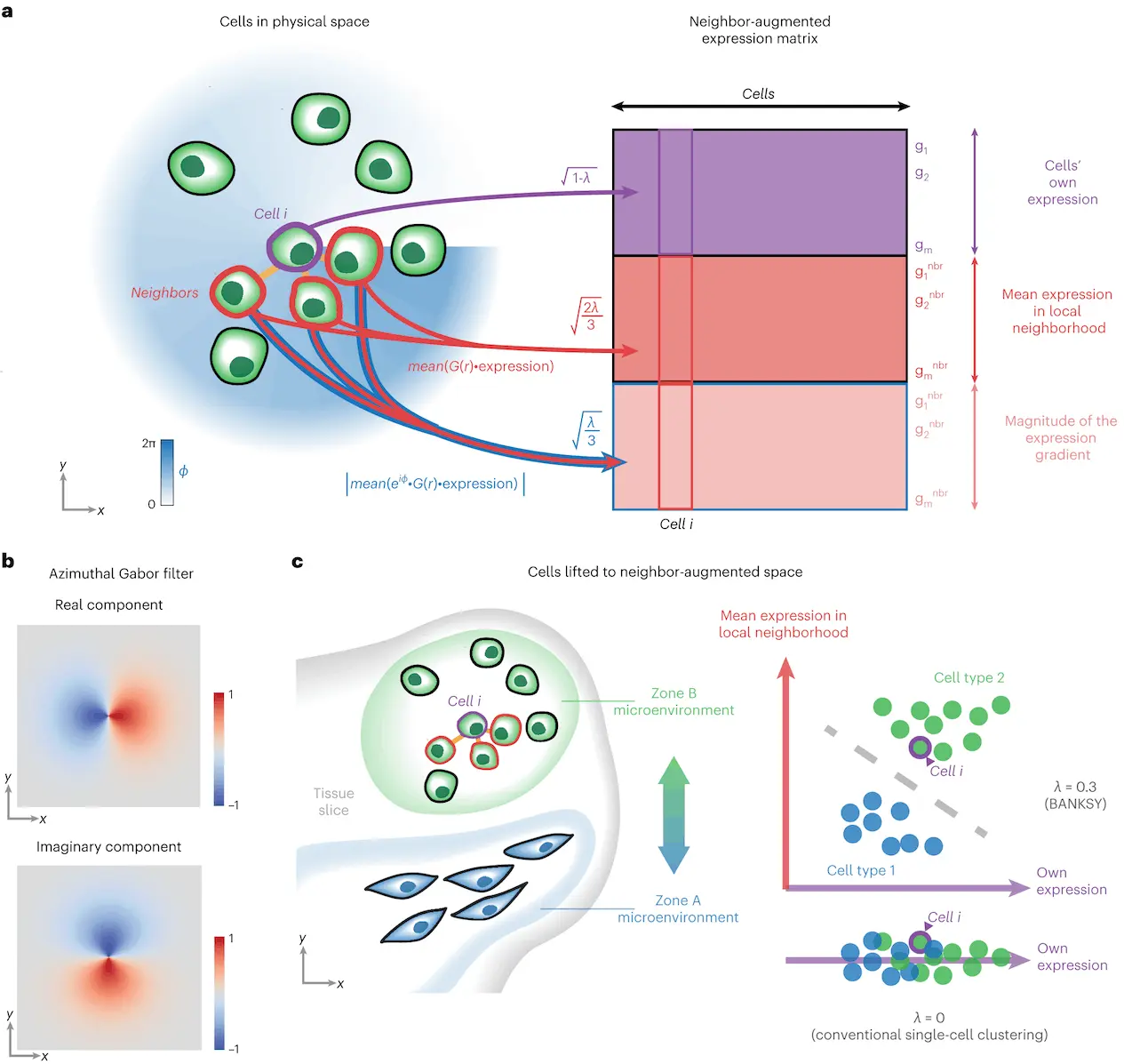Spatial omics involve scientists generating maps of gene expression within tissues as they continue to evolve. This is an extremely important development with significant implications for understanding complex biological processes like disease, development, or response to treatment. However, unlocking these secrets depends on our ability to effectively analyze this data.
This is what brings BANKSY into play. The novel algorithm A*STAR, Singapore, researchers developed represents a breakthrough in spatial omics analysis. Let’s unpack what BANKSY does and why it is revolutionary.
Cell Varieties: The Tissue Microenvironment Dissected
Traditional methods of spatially analyzing ‘omics’ data are mostly focused on cell types. This approach is correct and necessary, but it tends to disregard the importance of tissue microenvironment. Do you remember our city analogy? To understand a residential neighborhood, we need to consider the persons residing there and nearby shops, parks, and schools.
For this purpose, BANKSY makes use of neighborhood transcriptomes. It focuses on gene expression patterns not only in a single cell but also in its neighboring cells. Thus, BANKSY can tell us more about how a given cell derives its identity from where it is situated within the tissue.
Hidden Delights: Revealing Niche-Dependent Cell States
It goes beyond identifying types of cells to reveal more hidden ones that BANKSY is good at. The scientists employed BANKSY in studying the mouse brain, which is notoriously difficult to understand. This algorithm showed previous unnoticed niche-dependent cell states. They are types of cells whose distinctiveness strongly depends on where they are situated within the organ.
It, therefore, emphasizes how much the microenvironment matters in cell biology research. This implies that cells do not have strict categories but exist on a continuum such that their actions are determined by their proximity to each other. Understanding this changes everything we think we know about how brains grow, work, and get sick.
Built to Go Fast and Grow Big: Addressing the Challenges of Big Data
A significant challenge for traditional analysis methods is the ever-growing amount of spatial omics data. BANKSY confronts this by being very efficient and scalable. This platform is much faster than existing ones, making it easier for scientists to analyze massive datasets. Consequently, this enables the study of complex biological systems at an unprecedented scale.
Going Beyond Brains: BANKSY’s Ubiquity Across Tissues
BANKSY does not only work with the brain. The researchers also applied it efficiently in human colon cancer and DLPFC (dorsolateral prefrontal cortex) – a higher-order brain region involved in many functions. These diverse uses reflect how versatile BANKSY can be as a robust tool for conducting spatial omics analyses across different tissues.
Think Beyond Clustering: A Toolbox with Multiple Functionalities
The capacity of BANKSY goes beyond cell type identification and domain segmentation only. They also showed that it has a potential for quality control in spatial omics data, which is an important step towards ensuring that the data are clean for further analysis. Moreover, BANKSY can perform batch effect correction while still considering the spatial information. Batch effects may arise from technical variations during the acquisition of data, but BANKSY can account for these due to its incorporation of spatial context information.
A New Era of Discovery: The Future of Spatial Omics
The spatial omics of a cell could be better understood through BANKSY by its terms. Think about the friends who have the same traits but are shaped by their environments. This is what BANKSY shows: that the neighbors of a cell affect its functions and how such functions develop or lead to diseases. Exact cellular interactions govern organ formation in development. These interactions might be revealed using BANKSY. In this case, new therapeutic targets would lie on niche-dependent cell states found with BANKSY about disease research. Such treatments can help to target specific groups within a diseased tissue where cells are located. Finally, personalized medicine using BANKSY technology is now possible. An individual’s spatial omics data would allow clinicians to tailor treatment plans based on the unique cellular landscape of their patient’s disease if analyzed using this approach. Therefore, there is huge promise in precision at such levels as far as medicine is concerned in future times.
Join the Conversation!
Spatial omics is an emerging field with lots of promise. However, BANKSY is only the beginning of what could be described as a new epoch for discovery.
What are your thoughts on this inventive algorithm? How do you see BANKSY influencing future research efforts? Please share your thoughts below in the comment section so that we can continue discussing!
Article Source: Reference Paper | Reference Article | The Banksy R package can be obtained from https://github.com/prabhakarlab/Banksy | The Python version is available from https://github.com/prabhakarlab/Banksy_py.
Follow Us!
Learn More:
Anchal is a consulting scientific writing intern at CBIRT with a passion for bioinformatics and its miracles. She is pursuing an MTech in Bioinformatics from Delhi Technological University, Delhi. Through engaging prose, she invites readers to explore the captivating world of bioinformatics, showcasing its groundbreaking contributions to understanding the mysteries of life. Besides science, she enjoys reading and painting.
















